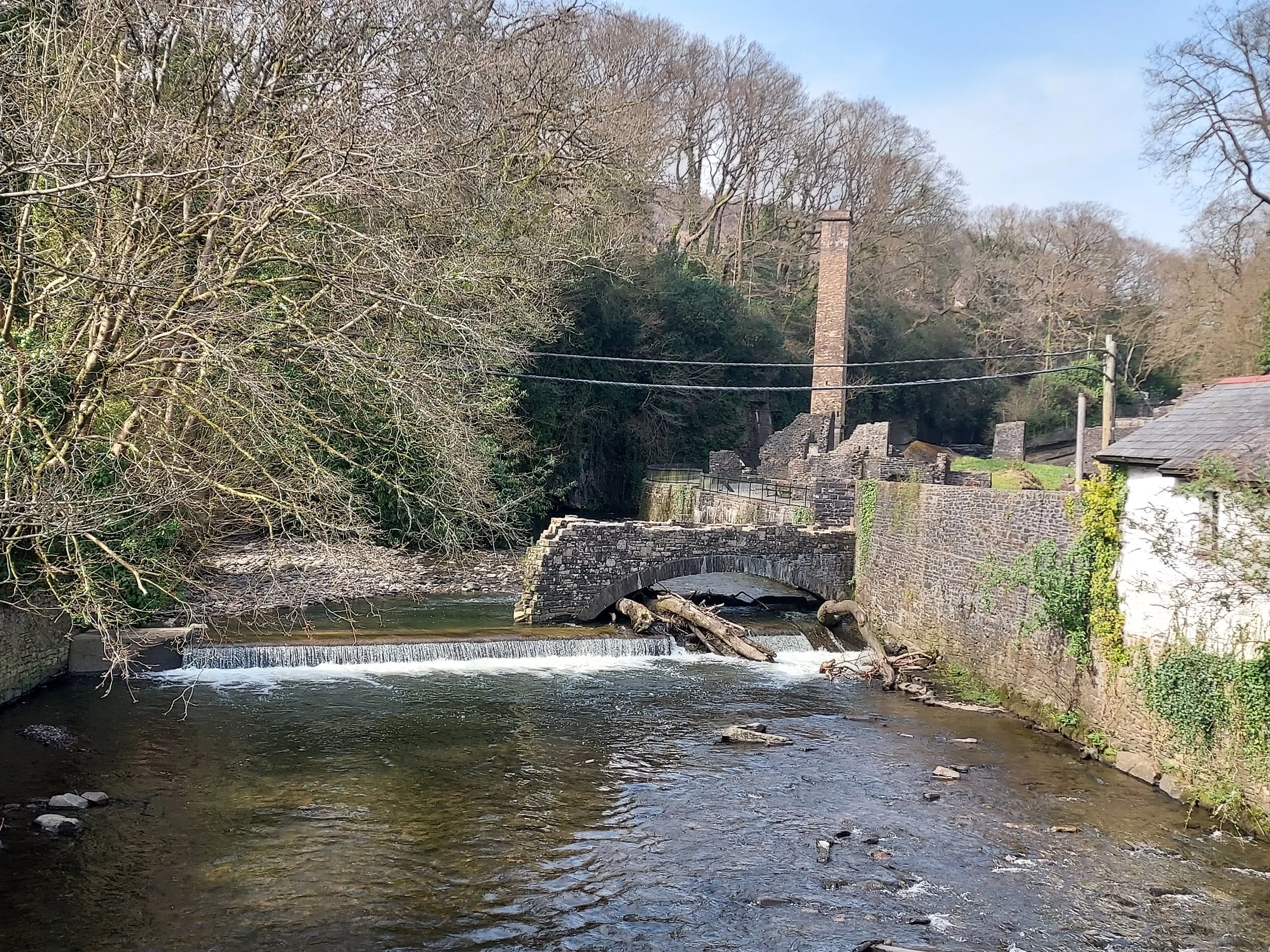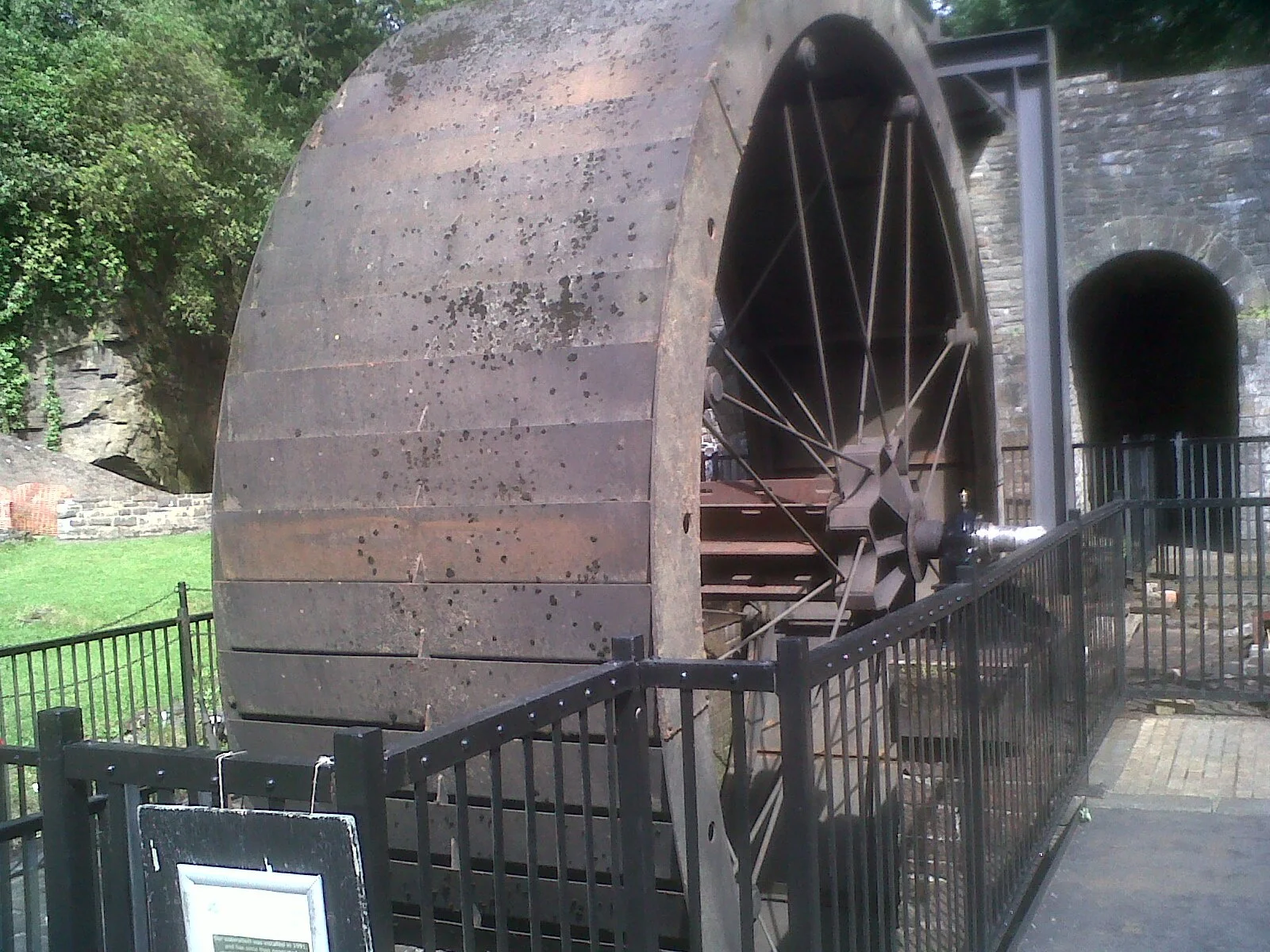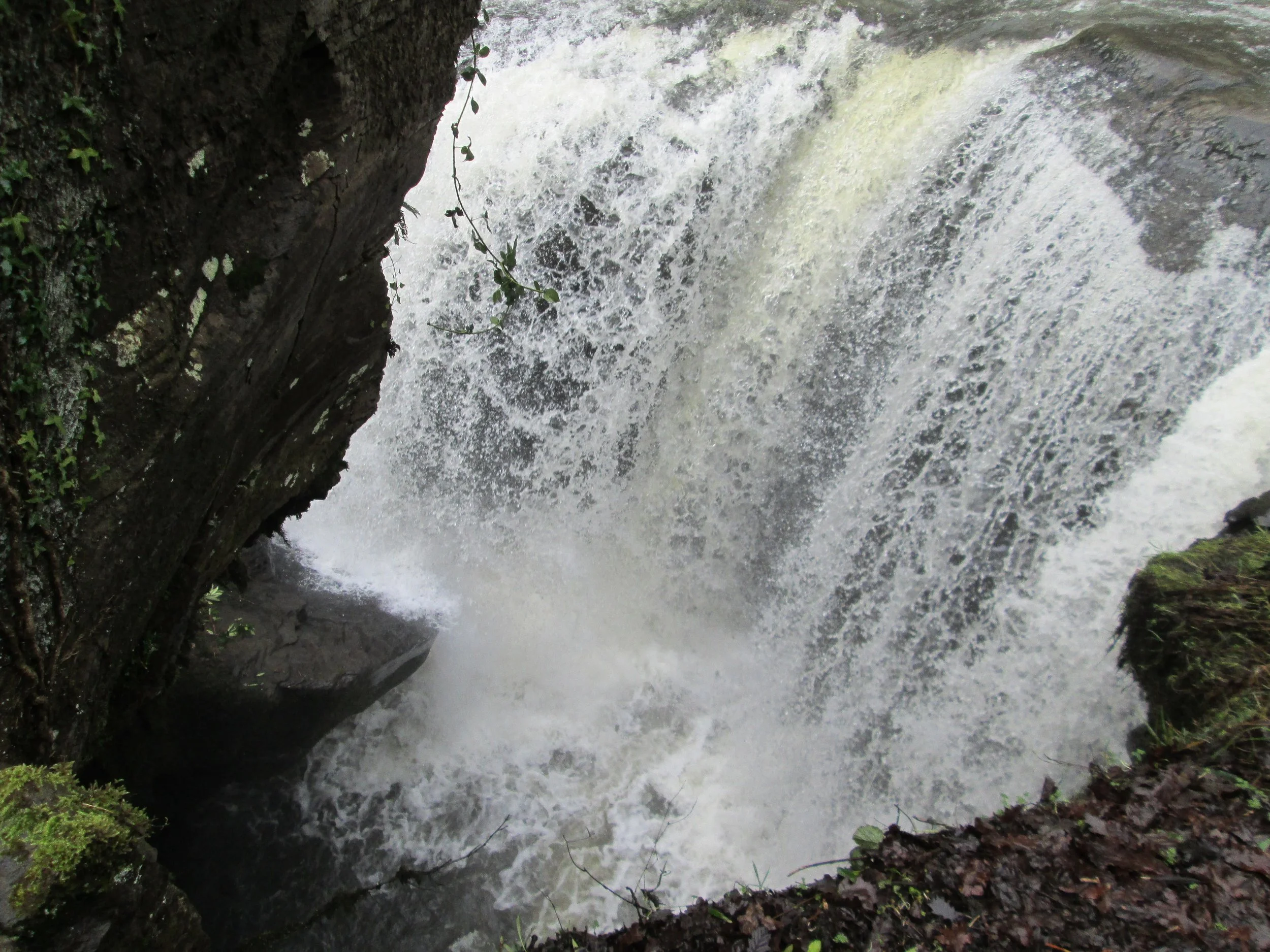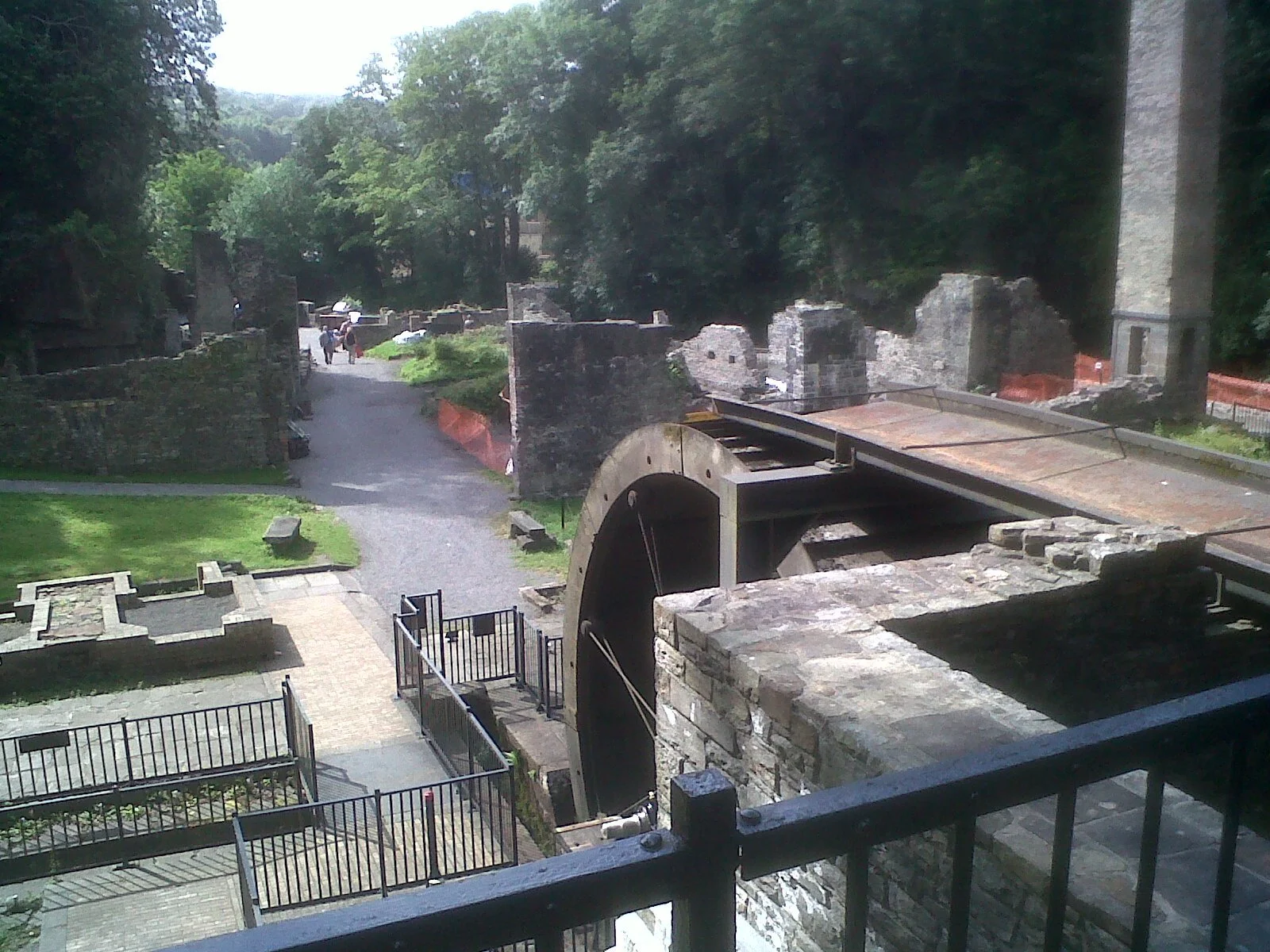Aberdulais Tin Works: The Valley that Fed America.
The River Dulais flowing past the historic tin works — once harnessed to power the great waterwheel that drove Wales’ tinplate revolution. Today, the weir and chimney stand together as echoes of a valley shaped by water and industry.
The River Dulais still roars through its narrow gorge, its spray drifting across the moss and stone. The sound is older than any furnace, yet it carries the memory of them. To stand here is to hear two histories at once: the slow story of water carving its path, and the faster story of people who turned that same force into power.Aberdulais looks peaceful now, but in the nineteenth century it was alive with industry. This quiet valley near Neath once helped Wales supply most of the world’s tinplate. What is now birdsong and water was once smoke, heat and the rhythmic strike of metal.
The great waterwheel — once the driving force behind Aberdulais’ pioneering tinplate industry.
A Valley of Power.
The tin works at Aberdulais opened in 1831, using the natural fall of the River Dulais to drive its wheel and machinery. Long before electricity, water powered the rollers that flattened iron sheets to be dipped in molten tin. Those sheets became one of the world’s most useful materials.
By the 1870s, South Wales produced around ninety per cent of all tinplate made on Earth. The region was an industrial powerhouse, its mills stretching across the Neath, Swansea and Llanelli valleys. Aberdulais was small by comparison, but it shared the same precision, skill and energy that defined Welsh metalwork.
The process was simple but relentless. The water turned the wheel, the wheel turned the rollers, and men guided glowing sheets of metal through the heat. The sound of the river mixed with the hiss of steam and the rhythm of work. It was hard labour, but it gave Wales a global reach.
The Dulais falls — the natural heart of tinworks. For centuries, its relentless power drove mills and forges, transforming water into industry and noise into progress.
The iron waterwheel at the heart of the works stands as a triumph to Victorian engineering. Even now, it remains a symbol of the valleys ingenuity and industrial might.
Feeding a New World.
By the late nineteenth century, that reach extended across the Atlantic. Welsh tinplate became a vital export to the United States, where it was used for food cans, tools, roofing and machinery. In 1890, Britain exported about 494,000 tons of tinplate. Nearly 300,000 tons of that came from Wales and went directly to America.
Three quarters of all Welsh tinplate crossed the ocean each year. The United States depended on the Welsh valleys to keep its factories moving. The quiet water of the Dulais, falling over stone, was part of a supply chain that linked Neath to New York.
Aberdulais played its part in that success. Each sheet of tin that left the valley carried a trace of the place itself: the roar of the falls, the discipline of its workers, and the pride of a small nation that could shape the world.
The Tariff That Changed Everything.
In 1890, the same year Welsh exports peaked, the United States Congress passed the McKinley Tariff. It imposed a seventy per cent duty on imported tinplate to protect emerging American industries. The effect in Wales was immediate and devastating.
Orders collapsed within months. Mills that had run day and night began to close. Workers were laid off, and whole communities lost their purpose. The valleys that had glowed with the light of forges went dark. Aberdulais, like many smaller works, could not survive.
The McKinley Tariff did encourage American production, but it also built on Welsh skill. Many of the engineers and mill workers who lost their jobs in Wales took their expertise across the Atlantic. Within a few years, new mills in Pennsylvania, Ohio and Illinois were producing their own tinplate using the same methods developed in the valleys.
An exhibit at Aberdulais tells the story of Welsh tinplate workers who carried their craft across the Atlantic after the 1890/91 tariff collapse. Their skills were so prized — and so secretive — that Americans once called tinmaking “a black art.”
Knowledge on the Move.
When the furnaces went out, the craft did not die. Wales had exported more than metal; it had exported mastery. Skilled men and women carried their knowledge to the United States, where it became the foundation of a new industry. In the early twentieth century, you could hear Welsh voices on the factory floors of Pittsburgh and Chicago.
This migration was both loss and legacy. It was the end of an era for Welsh tin, but the beginning of a global community linked by technique and pride. The story of Aberdulais is part of that larger movement. A single river in South Wales helped to shape the industrial character of another nation.
Echoes in the Water.
Today, Aberdulais is quiet once more. The National Trust maintains the site not as a factory but as a monument to ingenuity. The water still turns a wheel, now for hydroelectric power instead of production. The valley has traded smoke for mist and machinery for memory.
Visitors can walk among the stone foundations and listen to the same river that once powered a world trade. The roar of the falls is constant, but in its rhythm you can almost hear the beat of the old works: the turning of the wheel, the clang of the hammer, the murmur of workers.
Aberdulais is a story of transformation rather than decline. It is proof that history is never completely lost. The industry that once defined this valley continues to shape its identity. The river that once drove the forges now drives light into nearby homes.
The sound of Aberdulais today is not the clang of metal, but the reminder that even a waterfall can carry the weight of history.
The brick foundations are all that remain of the furnaces and rolling mills that once transformed molten metal into world-famous Welsh tinplate. Here, industry’s ghosts still trace the outlines of a global revolution.







